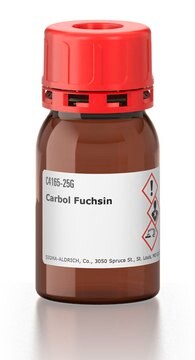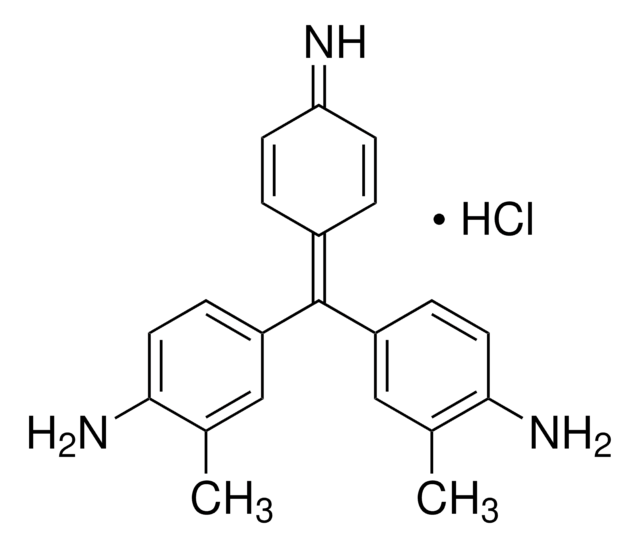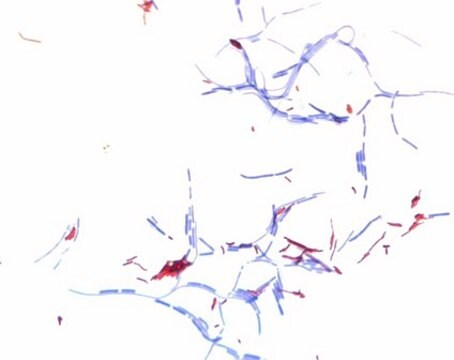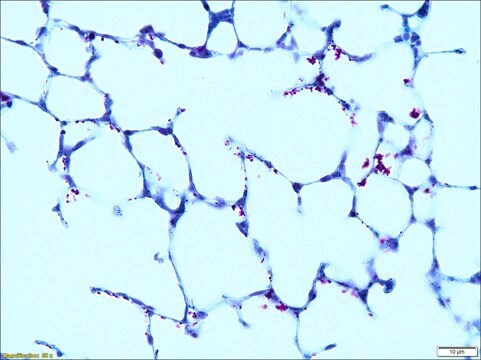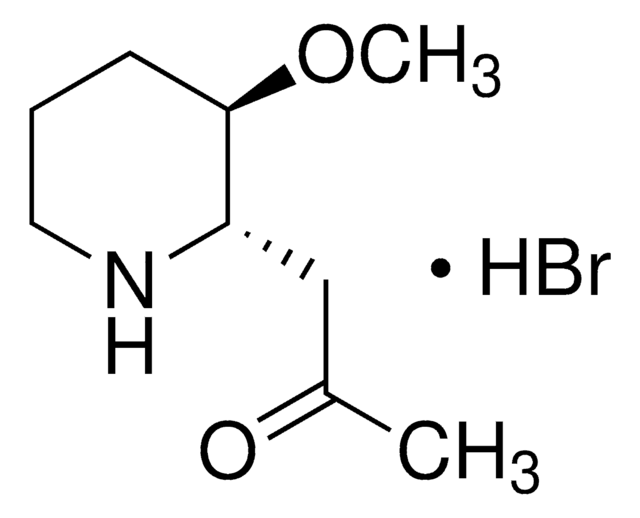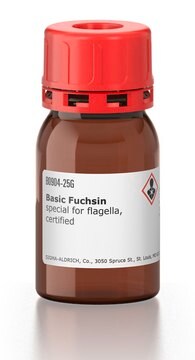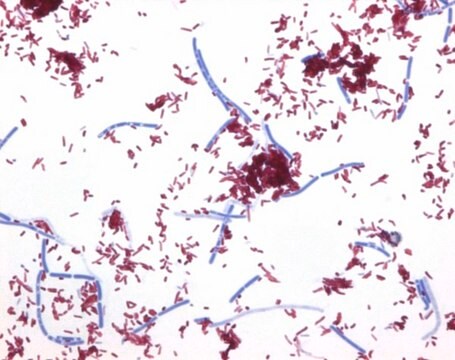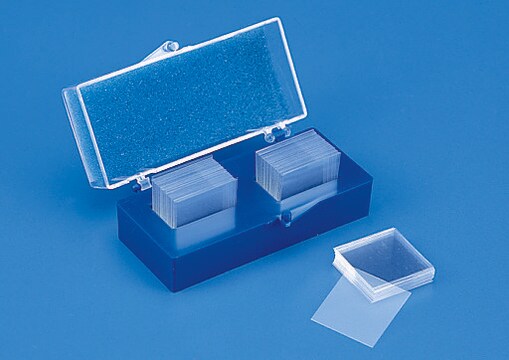21819
Carbol-Fuchsin solution according to Kinyoun
for microscopy
Synonym(s):
Kinyoun’s carbol-Fuchsin
About This Item
Recommended Products
grade
for microscopy
Quality Level
form
liquid
composition
fuchsin basic (certified stain; C.I. 42500), 3 % (w/w)
impurities
phenol
color
red to very dark red
density
0.99 g/mL at 20 °C
ε (extinction coefficient)
77 at 546 nm in 50% ethanol
application(s)
diagnostic assay manufacturing
hematology
histology
storage temp.
room temp
SMILES string
NC1=CC=C(C(C2=CC=C(N)C=C2)=C(C=C3)C=CC3=[NH2+])C=C1.[Cl-]
InChI
1S/C21H21N3/c1-13-11-16(5-9-19(13)23)21(15-3-7-18(22)8-4-15)17-6-10-20(24)14(2)12-17/h3-12,22H,23-24H2,1-2H3
InChI key
IMOKRVRFBCWWGH-UHFFFAOYSA-N
General description
Application
- Kinyoun’s carbol-fuchsin is intended for use to stain paraffin sections of a formaldehyde-fixed specimen containing tubercle bacilli, and for the demonstration of tuberculosis bacteria (Mycobacterium tuberculosis).
- It is also applicable for other organisms that retain the dye after immersion in acidified 70% alcohol.
- It has been used to develop a staining technique for detecting microsporidial spores in fecal specimens.
Principle
Other Notes
Signal Word
Danger
Hazard Statements
Precautionary Statements
Hazard Classifications
Acute Tox. 4 Oral - Aquatic Chronic 3 - Carc. 2 - Eye Dam. 1 - Flam. Liq. 3 - Muta. 2 - Skin Corr. 1B
Storage Class Code
3 - Flammable liquids
WGK
WGK 3
Flash Point(F)
109.9 °F - closed cup
Flash Point(C)
43.3 °C - closed cup
Choose from one of the most recent versions:
Already Own This Product?
Find documentation for the products that you have recently purchased in the Document Library.
Customers Also Viewed
Articles
The diseases produced by species of the genus Mycobacterium are important causes of morbidity and mortality in the world. The identification of mycobacteria to the species level is important because of the clinical significance; some species are pathogenic while others are not.
Our team of scientists has experience in all areas of research including Life Science, Material Science, Chemical Synthesis, Chromatography, Analytical and many others.
Contact Technical Service